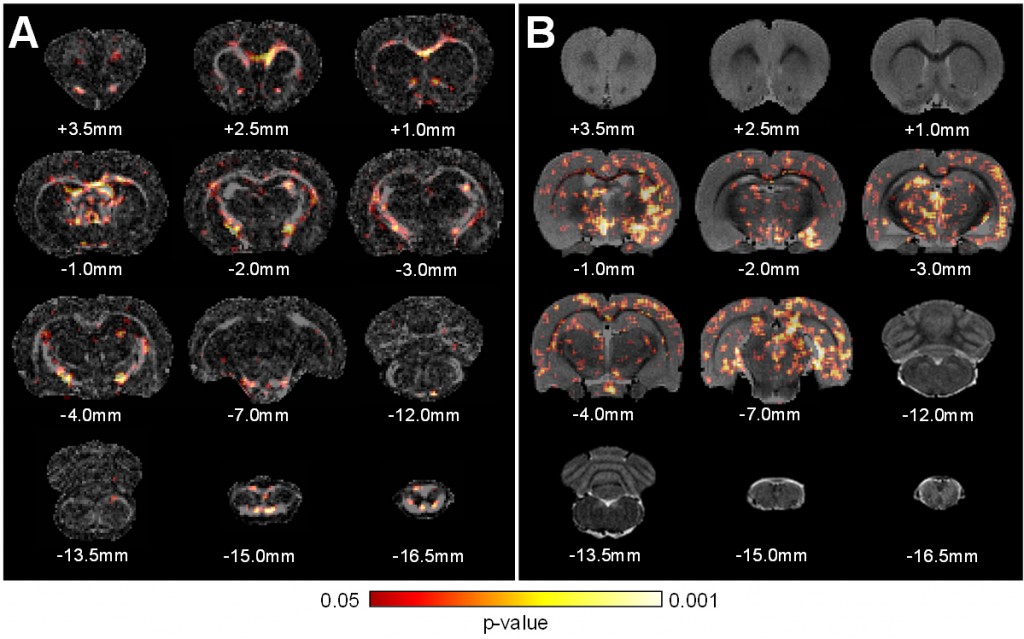Research Highlight: Biomedical Imaging
Imaging Tissue Damage and Metabolic Disorders in Diffuse Traumatic Brain Injury
Traumatic brain injury (TBI) represents a serious public health problem in the United States. Health disparities exist among African Americans with a 35% higher TBI incidence than Caucasians have, but they are less likely to have appropriate follow-up monitoring after emergency department discharge. Using a well-characterized rat model of diffuse TBI, this project investigates the application of advanced neuroimaging techniques to identify the interrelations of trauma pathophysiology for diagnosis of diffuse TBI.

Significance maps of the DTI-FA (A) and MTR (B) over a 30-days period following diffuse TBI. Decreases of DTI FA were most prominent in the major white matter tracts, suggesting superior specificity in detecting diffuse axonal injury. The changes of MTR at 3.5 ppm not only showed in the white matter tracts, but also in the gray matter regions, including cortex, striatum, thalamus, and hippocampus.
References
- Tu TW, Williams RA, Lescher JD, Jikaria N, Turtzo LC, Frank JA.
Radiological-pathological correlation of diffusion tensor and magnetization transfer imaging in a closed head traumatic brain injury model.
Ann Neurol. 2016 Jun;79(6):907-20. doi: 10.1002/ana.24641. Epub 2016 Apr 18. PMID 27230970 - Tu TW, Ibrahim W, Jikaria N, Munasinghe J, Witko, Hammoud D, Frank JA.
On the detection of cerebral metabolic depression in experimental traumatic brain injury using Chemical Exchange Saturation Transfer (CEST)-weighted MRI.
Scientific Reports, 2018 Jan; 8:669. PMID 29330386 PMC5766554 - Tu TW, Lescher JD, Williams RA, Jikaria N, Turtzo LC, Frank JA.
Abnormal injury response in spontaneous mild ventriculomegaly Wistar rat brains: a diffusion tensor and magnetization transfer imaging study.
Journal of Neurotrauma, 2017 Jan 1;34(1):248-256. PMID 26905805 PMC5198143
